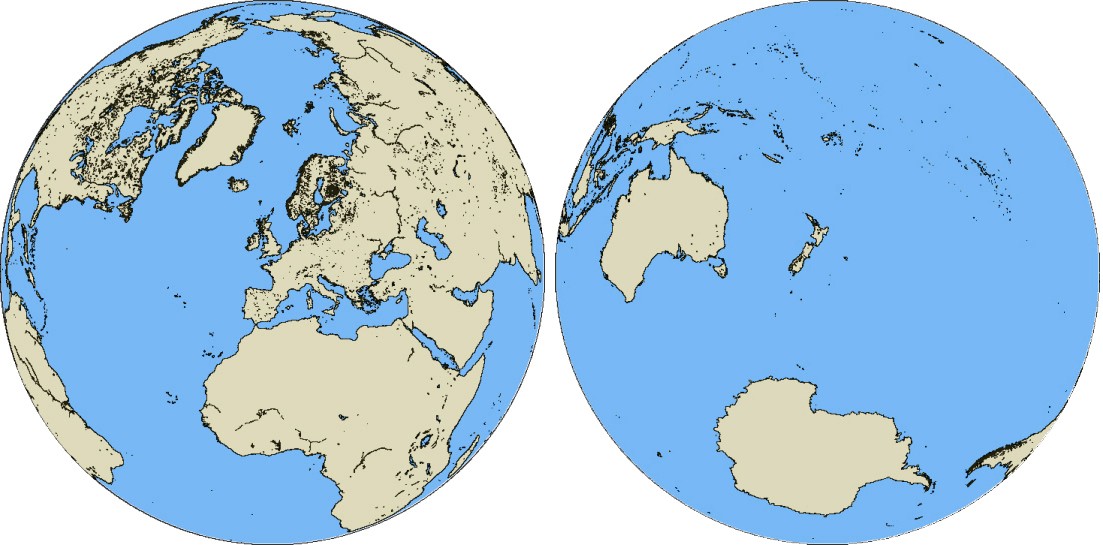
- Reiso, Public Domain
- Slicing the Earth in two as shown maximizes the area of land in one hemisphere and of water in the other. The Land Hemisphere, left, contains seven-eighths of Earth's land.
Although it's always a bit of a risk to include an email address in my byline, the rewards far exceed the odd solicitation or very occasional invitation to take my column back where it came from. Mostly, I get questions. For instance:
How old is dirt? When some old geezer announces that he's "as old as dirt," you may want to check if that's really dirt he's talking about, or soil. According to USGS geologist Milan Pavich, "Most of the dirt you see today is from the past 2 million years." Earth went through a major cooling phase 2 million years ago, resulting in (1) huge deserts, which sent fresh dirt around the world in dust storms; and (2) new and expanded glaciers, which ground vast amounts of underlying rock into dirt. Soil, on the other hand, is the rich organic black stuff in your backyard, created largely by bacteria during the last thousand years.
Does the temperature of Humboldt Bay change during the day? More than you might think, especially during summer. The Central and Northern California Ocean Observing System, based locally at HSU, continually logs water quality below B Dock on Woodley Island. You can view simultaneous plots of water depth and temperature, among other parameters, on its website (Google "CeNCOOS"). In summer, the water temperature immediately after high tide (as water flows out from the sun-warmed Arcata Bay shallows) is typically about 5 degrees Fahrenheit higher than after low tide (as cold ocean water floods into the bay). The high-tide/low-tide temperature difference is much less in winter.
Where does the term "southpaw" come from? Although this slang for a leftie is often used in the context of boxing, the Oxford English Dictionary claims that it originated with baseball here in the U.S. Ballparks are traditionally orientated to have batters facing east, so they don't get afternoon sun in their eyes. This means that a left-handed pitcher throws with his south-side arm.
What's the "Land Hemisphere"? Imagine slicing the Earth in two, as if you were cutting an apple in half. One way is to cut it across the middle, i.e. the equator, to create the northern and southern hemispheres. You could also slice it vertically, through the 0 and 180 degree plane of longitude, to give, roughly, the Old World and the New World. (The International Date Line runs along 180 degrees of longitude, with exceptions around Siberia and Pacific island territories.)
You could also cut it to maximize land area in one hemisphere and water in the other. Turns out that the "Land Hemisphere," which happens to be centered near Nantes in northern France, contains seven-eights of Earth's land mass (including Europe, Africa, North America, and most of Asia and South America). This leaves the "Water Hemisphere," centered near New Zealand (antipodal to Nantes), containing the remaining one-eighth of Earth's land, including Australia and Antarctica. Other than that, most of the Water Hemisphere consists of the Pacific and Indian oceans.
Barry Evans ([email protected]) does not advocate cutting the Earth in two, at least while he's still on it.
Comments